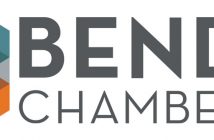You can tell if you’re wasting money on a billing system by taking a look at how many times per day you count currency manually and how often your customers complain about the time it takes to complete a transaction. If this sounds like your business, then you might want to consider switching to an integrated solution that will help you save time and make sure your employees aren’t wasting money on manual processes.
You’re counting currency manually.
If you are counting currency manually, it’s because your business is still operating on paper invoices. When this happens, businesses tend to see the same thing: extra time spent on every invoice and a lot of manual work in order to make sure everything is accounted for.
Manual invoice processing leaves room for error as well. You have no way of knowing if someone has miscounted or if there are mistakes in the data being entered into your system (and potentially errors in reporting). In addition, manual processes can be time-consuming, which means that those who are responsible for handling this part of the process may have trouble staying focused throughout the whole day.
You use coupons or vouchers for promotions.
Coupons and vouchers are a waste of time. They’re not effective, they cost you money, and they require extra effort on your part. You’re better off using the same amount of time to focus on getting new customers than trying to get back customers who aren’t going to return anyway because your service isn’t good enough.
You’re also wasting money when you use coupons or vouchers for promotions. You might be able to sell more items with these types of offers at first, but then your business will just end up losing money in the long run because people aren’t loyal enough to stay with your company after they’ve gotten free stuff from it once or twice (or five times).
In addition to being a waste of time and money, coupons and vouchers are also a waste of resources: paper products like printing paper used during production; ink cartridges used during printing; transportation costs associated with distribution; electricity costs associated with powering computers/printers/copiers etc., etc., etc., ad nauseam…
Your customers are complaining about the time it takes to complete a transaction.
This is a big one. If your customers are waiting too long to complete a transaction, how do you know? The answer is simple: they tell you.
Your customers are likely not shy about sharing their feedback with you. They’ll often let their frustrations be known through complaints or even by simply leaving without completing the transaction at all. If this happens enough times, it can be devastating to your business’ bottom line.
You may not realize how much damage is being done until it’s too late—and as we discussed above, that’s bad news for both your wallet and reputation as a business owner.
Your employees have to manually keep track of your business’ inventory.
You might be wasting money on your software if you have to manually count your inventory. If your employees have to count cash, coupons, vouchers, gift cards and tickets by hand, it’s likely that this process is time-consuming and prone to errors.
Your employees may not have the necessary knowledge or experience to accurately track each type of business transaction. They may also struggle with keeping up with changes in inventory when products are added or removed from stock.
Your customers have to wait in line because you don’t have enough cash registers during peak hours.
If you’re running a restaurant, one of the most important things you can do is have enough cash registers during peak hours. You need to be able to handle all the customers who are coming in and out at once.
There are two ways that restaurants handle this: either each employee has their own cash register, or they share one cash register among multiple people. There are advantages and disadvantages of both options:
Employee-specific: When every employee has their own money counter, it’s easy for them to get everything done quickly without having to wait for someone else in line at another register. They only have to deal with one customer at a time and don’t need help with anything else while they’re working on somebody else’s transaction (unless there’s more than one person doing food orders). It also gives each worker more responsibility—the person using it has no choice but to keep track of what they take from customers’ cards so that nothing gets mixed up later on when reconciling bank statements because there isn’t any other way around taking money from people other than through their cards themselves! All this adds up over time—especially if someone forgets about something important such as a coupon code or discount offer!
You count your cash multiple times per day to check if it’s accurate.
You can easily check if your cash count is accurate by comparing it to what’s on the books. If you’re a high-volume business, this can be time consuming and cause delays in checking in new customers or getting their orders ready for pickup.
If you’re looking for ways to improve efficiency, consider upgrading from manual counting methods to electronic ones that automate bookkeeping tasks.
You want a more efficient way of processing payments and keeping track of your business’ inventory using one system.
If you’re looking to cut back on the time spent collecting payments, or if you want a more efficient way of processing payments and keeping track of your business’ inventory using one system, then a billing system is right for you. But if all you need is an automated telephone answering service (ATAS), skip it and save yourself some money.
It’s important to make sure you’re not wasting money on a billing system that doesn’t do its job
When it comes to billing systems, the old saying “you get what you pay for” is true. If you choose a billing system that doesn’t do its job or isn’t right for your business, then you’re wasting money on something that’s not helping your company grow.
Here are some things to consider when looking at billing systems:
Make sure it’s easy to use. Some companies have multiple people who work on the same project, so having an easy-to-use system will save time and energy in the long run.
Make sure it fits into your workflow and budget needs. You don’t want to be paying more than what’s necessary because of features that aren’t useful to you or won’t fit into your workflow (or simply aren’t worth paying extra).
Make sure it works with other software platforms (like Microsoft Office) if applicable; otherwise, this can slow down productivity significantly while employees figure out how everything works together as opposed to individually (and possibly incorrectly due to lack of training).
Conclusion
As you can see, there are a lot of things that can go wrong with a billing system. If you’re wasting money on one, it could be costing your business thousands or even millions of dollars per year. It’s important to make sure your billing software is doing its job properly so that you know exactly how much money is coming in and going out without having to keep track manually. The last thing anyone wants to do when running their own company is spend hours on end counting what they have in their pocketbook or checking out customers at the register! So if this sounds like something that might be happening at your place of business, check out some other alternatives before making any decisions about changing systems (or maybe even upgrading).




